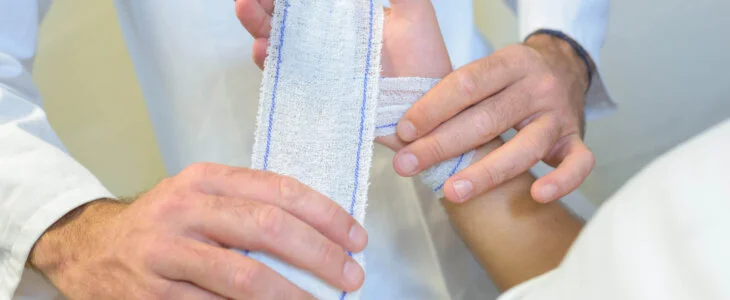In a flurry of culinary ambition, amidst the sizzling pans and tantalizing aromas, disaster strikes in the kitchen. The cook (you) is engaged in a ballet of multitasking and misjudges the distance between the pot of boiling water and the pan of sauteing vegetables. Your hand accidentally collides with the scalding hot stove, and pain shoots up your arm.
What’s next? From a medical perspective, should you put Vaseline on burns? We will examine that in this article by providing advice from medical experts and sprinkling in a dash of common sense to determine the best course of action.
History Of Vaseline
First, a brief history lesson. Vaseline is a brand of petroleum jelly-based products owned by British-Dutch company Unilever. The product was first discovered in 1859 when a young chemist, Robert Augustus Chesebrough, learned that oil workers were using gooey jelly to heal their burns and wounds.
Ever since people have been using the brand’s original healing jelly to treat burns. The semi-solid mixture is made from hydrocarbons, with a melting point within a few degrees of human body temperature, which is why it softens upon application. Because Vaseline is water repellent, it can protect and repair skin as well.
Classify Your Burn
Now, let’s jump back into the kitchen scenario. Your hand is actually burnt, and your next move is to identify the severity of the burn before putting Vaseline on burns. According to University of California-San Diego Health, there are four types of burns:
- First-degree: Affects only the outer layer of skin, known as the epidermis. The burn site will be red, perhaps slightly painful, but very little blistering (if any). The pain level compares to a mild sunburn with almost zero chance of long-term damage.
- Second-degree: These burns involve the epidermis and part of the lower layer of skin, the dermis. Most people begin experiencing pain at this level and the area is likely to blister and show signs of swelling.
- Third-degree: Both the epidermis and dermis are destroyed from third-degree burns. The burn site may look white or blackened because the layers of skin are charred.
- Fourth-degree: In the most severe case, fourth-degree burns go through every skin layer and reach deeper tissue and bone. There will be no feeling in the area because nerve damage occurs.
If you believe your burn is greater than the first degree, you should get medical attention right away. Third and fourth-degree burns will need be treated by a specialist in the burn unit of a hospital. Vaseline on burns are perfectly fine for first-degree injuries.
Immediate First-Aid
Once you’ve deemed your burn minor (first-degree), it’s time to start treating the affected area. Don’t waste any time because the longer you wait, the longer your burn stays inflamed, which causes pain and increases the chance of scarring. The American Academy of Dermatology Association (AAD) outlines a five-step plan for treating a first-degree burn:
- Cool the burn: Immediately run cold water over the burn or apply a cold compress. Repeat the process as needed for about 10 minutes or until the pain subsides.
- Apply Vaseline: The petroleum jelly properties help insulate the burn and prevent outside substances from getting inside. Apply the Vaseline on burns two to three times daily.
- Bandage: Cover the burn with a nonstick, sterile bandage. If a blister forms, let it heal on its own while keeping the area covered with the bandage.
- Medication: Pain management is an important part of burn treatment. Take over-the-counter pain relief medications to reduce inflammation.
- Protect: Even once the burn heals, protect the area from the sun with clothing or water-resistant sunscreen (SPF 30 or higher).
Please note that these are general steps for dealing with minor burns. For major burns, or burns on the face, hands, feet, major joints or genital area, or if the burn is caused by chemicals or electricity, you should seek professional medical help immediately!
Debunking Myths
Putting Vaseline on burns is sound medical advice for minor injuries, but sometimes it gets lumped in with radical at-home burn remedies like butter, toothpaste, and egg whites. These products aren’t sterile and can introduce bacteria into a burn wound. Also, it can cause irritation and allergic reactions in some people, leading to even more damage.
Other ointments and creams not specifically designed for burns might seem soothing, but they can interfere with the healing process and increase the risk of infection. Using Vaseline on burns will be your best option unless the healing process doesn’t improve or you start to develop a fever. In those situations, always seek medical attention.
Personal Injury Cases
Burn injuries present a unique opportunity for financial compensation under the right circumstances. Putting Vaseline on burns isn’t one of these situations, but people suffer from severe burns all the time. If you believe Deldar Legal can help you settle a claim, call us at (844) 335-3271 or contact us for a free case evaluation today!


